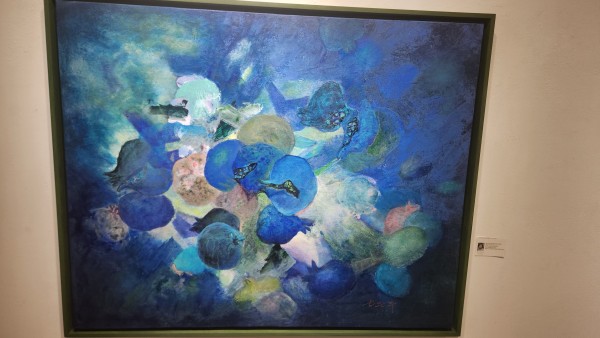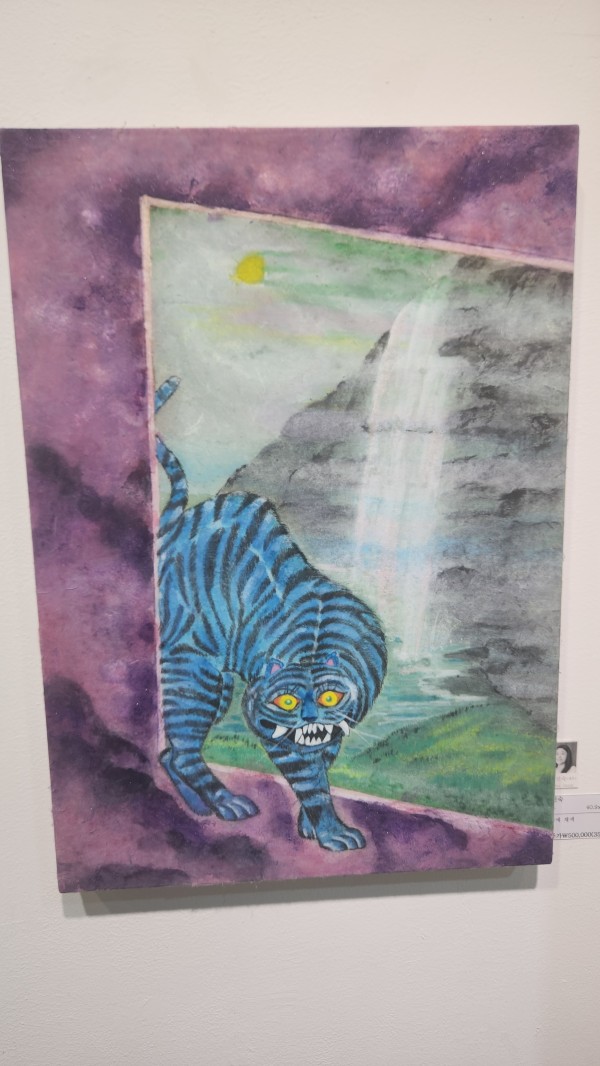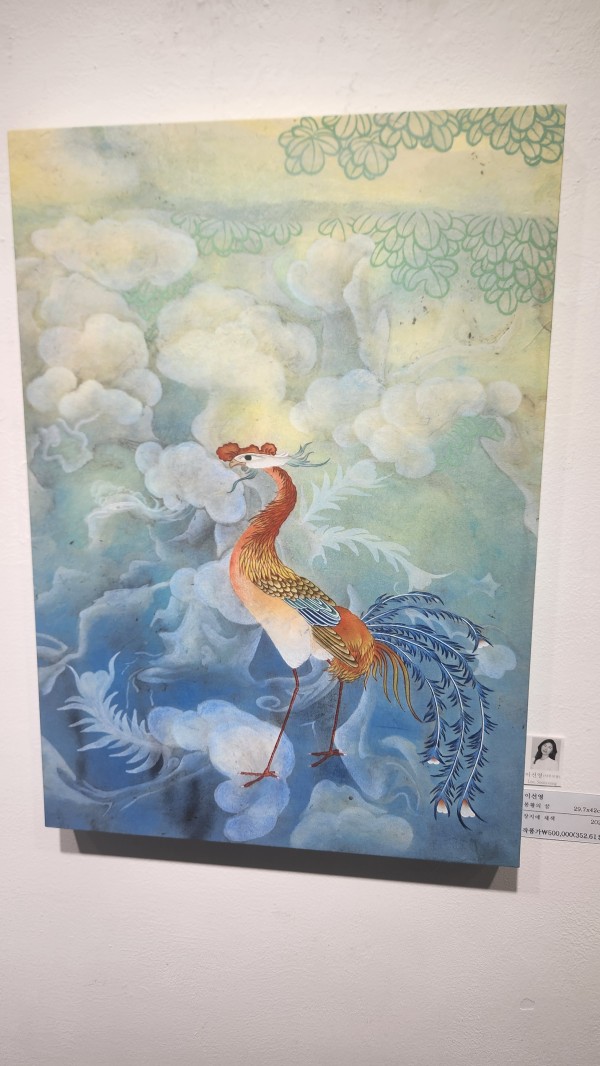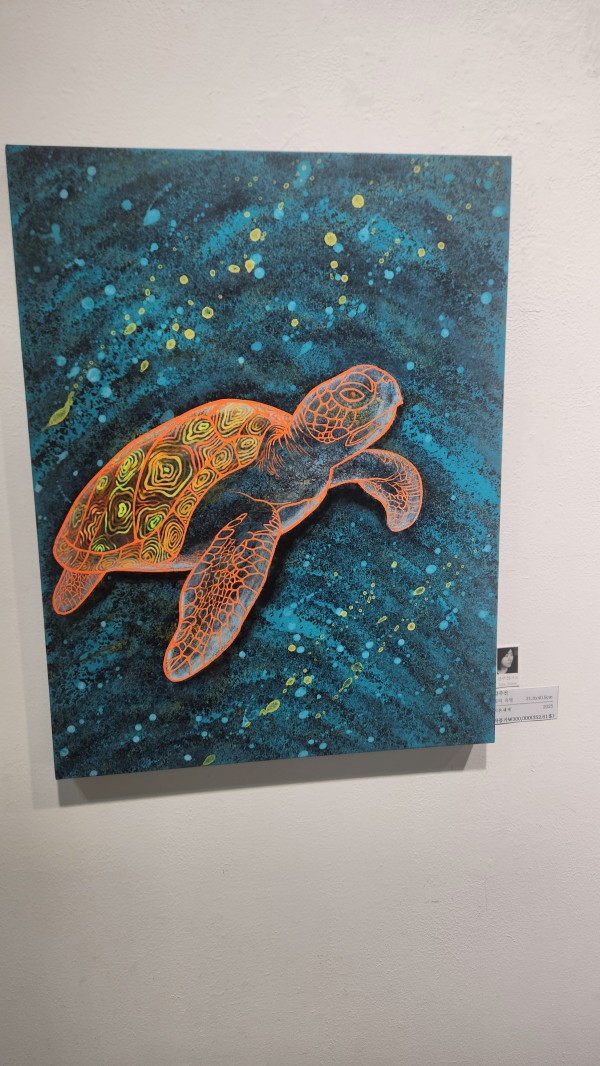
On a quiet autumn afternoon in Insadong, the air inside Gallery Luben carries the faint scent of ink and the soft warmth of hanji paper.
From October 16 to 22, the artist collective “Window of the East” presented its annual exhibition—an immersive showcase of how Eastern sensibility can be reinterpreted within the language of contemporary art.
Formed in 2001, Window of the East brings together painters from diverse backgrounds—both Korean and Western-trained—with a shared vision: to rediscover the “Korean aesthetic” through modern expression. Rather than merely restoring traditional art, the group transforms its essence.
The subtle hues of obangsaek (the five traditional colors), the texture of hanji, and the rhythmic lines of folk motifs and calligraphy are all reconstructed through a contemporary lens, resulting in works that bridge time and culture.
“A Pomegranate Holds the Flow of Time”
Among the participants, artist Eunju Kim captivated viewers with her paintings of pomegranates, grapes, and other seed-bearing fruits. Beneath the layered surface of her work lies a delicate interplay of color and movement—each stroke suggesting rhythm, breath, and the quiet pulse of life.
“The pomegranate is a seed of life,” Kim said with a gentle smile, standing before her painting. “Each grain contains the flow of time—it disappears, yet blooms again. To me, it symbolizes continuity and rebirth.”
For Kim, these fruits are more than still-life imagery—they are metaphors for cyclical existence. Up close, her brushwork reveals a nuanced harmony of ink tones and color gradations, evoking the organic rhythm of living matter.
“At first, I was simply drawn to its beauty,” she admitted. “But over time, I realized that what I was really painting were my own emotions. Inside those bursting seeds, there’s hope, pain, and resilience.”
“Art is a Conversation with Myself”
When asked what she values most in her creative process, Kim paused before answering simply: “Patience.”
She spends over ten hours a day tracing lines on hanji, treating the act as a form of meditation.
“Art-making is never easy,” she said. “But if you endure to the end, the work will eventually speak back to you. Whether it sells or not doesn’t matter—it’s always a dialogue with myself.”
Now preparing for her first solo exhibition since completing her master’s degree, Kim sees this group show as a pivotal moment.
“I’m still exploring how to express genuine emotion through traditional materials and subjects. It’s a challenge, but also a renewal.”
Between Past and Present
Other works in the exhibition extended this dialogue between heritage and innovation.

Painter Jinsook Choi reimagined traditional tigers from Korean folklore; Juseon Kang depicted turtles as symbols of endurance; and Sunyoung Lee painted phoenixes rising from vivid layers of color.
As Kim explained, “What we’re doing is not preservation—it’s reinterpretation.
We’re rewriting the language of tradition through today’s sensibility. I want to convey the slowness, the emptiness, and the cyclical beauty embedded in Eastern philosophy.”

“Insadong Is Both Past and Present”
The choice of Insadong—a district where Korea’s artistic past and present coexist—was no coincidence.
“Insadong is the heart of Korean art,” Kim noted. “It’s where traditional craft meets contemporary expression. We wanted our work to start a new conversation here.”
Indeed, Window of the East is more than a collective—it’s a living experiment in bridging eras. The exhibition itself became a space where old and new, East and West, quietly converged.
On the final day, Kim stood silently before her painting, her gaze soft but resolute.
“I think time inside me is finally beginning to speak through my work,” she said.
Two decades on, Window of the East continues to evolve—not merely preserving Korean tradition, but transforming it into a living aesthetic that resonates with today’s art world.
Amid the winding alleys of Insadong, their canvases open, once again, a new window to the East.
